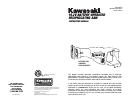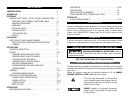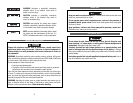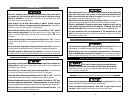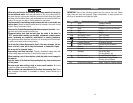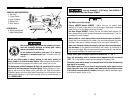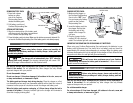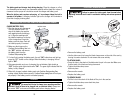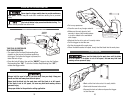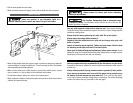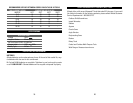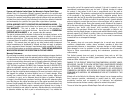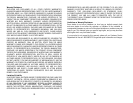
WORK AREA
Keep your work area clean and well lit. Cluttered work benches and dark work
areas may cause accidents or injury.
Do not operate power tools in explosive areas, such as in the presence of
flammable liquids, gases or dust. Power tools create sparks which may ignite
the dust or fumes.
Keep bystanders, children and visitors away while operating a power tool.
Distractions can cause you to lose control.
ELECTRICAL SAFETY
Do not abuse the cord. Never use the cord to carry the tool. Keep the cord
away from heat, oil, sharp edges, or moving parts. Replace damaged cords
immediately. Damaged cords may create a fire.
A battery operated tool with integral batteries or a separate battery pack
must be recharged only with the specified charger for the battery. A charger
that may be suitable for one type of battery may create a risk of fire when used with
another battery.
Use battery operated tool only with specifically designated battery pack. Use of
any other batteries may create risk of fire.
4
WARNING indicates a potentially hazardous
situation which, if not avoided, could result in
death or serious injury.
CAUTION indicates a potentially hazardous
situation which, if not avoided, may result in
minor or moderate injury.
CAUTION used without the safety alert symbol
indicates a potentially hazardous situation which,
if not avoided, may result in property damage.
NOTE provides additional information that is useful
for proper use and maintenance of this tool. If a
NOTE is indicated make sure it is fully understood.
IMPORTANT SAFEGUARDS
People with electronic devices, such as pacemakers, should consult their
physician(s) before using this product. Operation of electrical equipment in
close proximity to a heart pacemaker could cause interference or failure of
the pacemaker.
WARNING: Some dust created by power sanding, sawing, grinding, drilling and
other construction activities contains chemicals known to the State of California
to cause cancer, birth defects or other reproductive harm.
Some examples of these chemicals are:
• Lead from lead-based paints.
• Crystalline silica from bricks and cement and other masonry products,
and arsenic and chromium from chemically-treated lumber.
Your risk from these exposures varies, depending on how often you do this type
of work. To reduce your exposure to these chemicals: work in a well ventilated
area, and work with approved safety equipment, such as dust masks that are
specially designed to filter out microscopic particles.
WARNING: Handling the power cord on corded products may expose you to
lead, a chemical known to the State of California to cause cancer and birth
defects or other reproductive harm.
Wash hands after handling.
3



